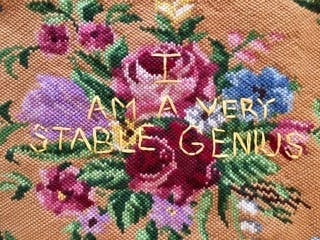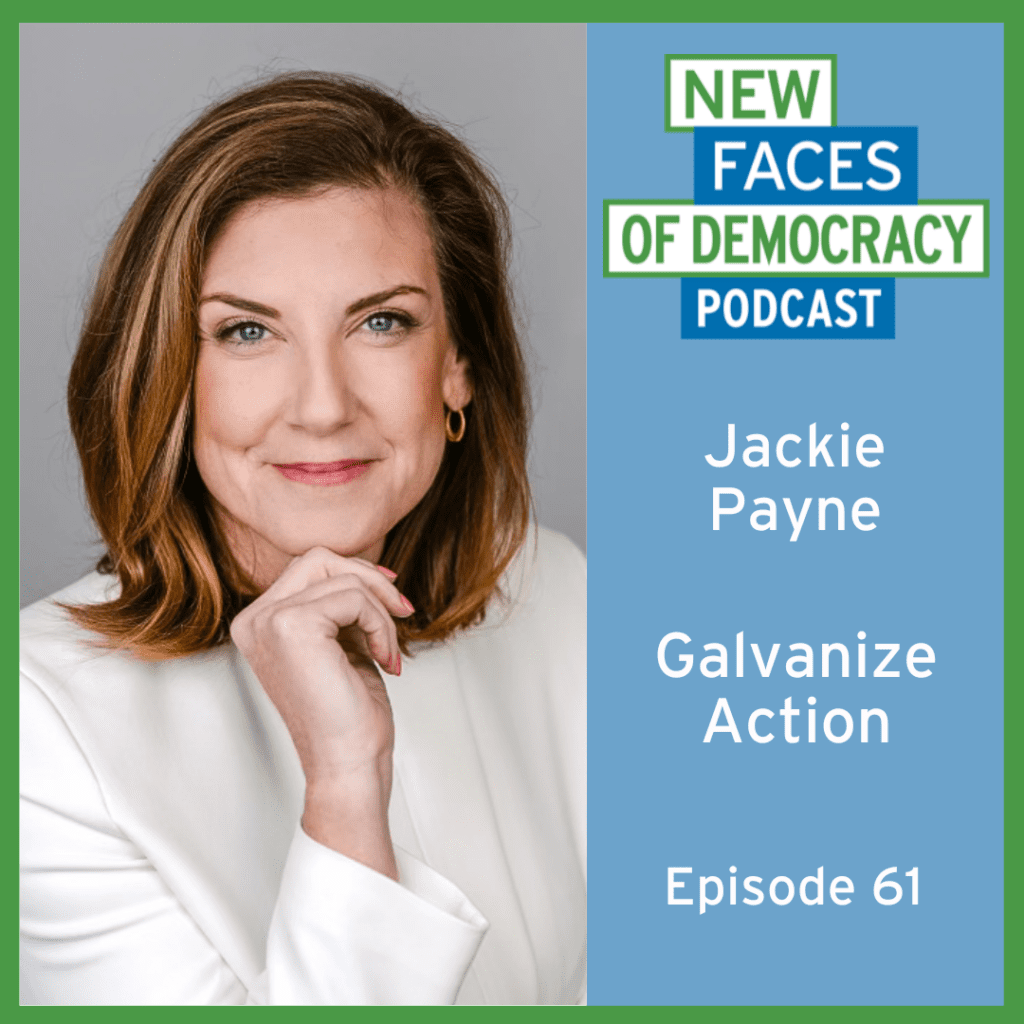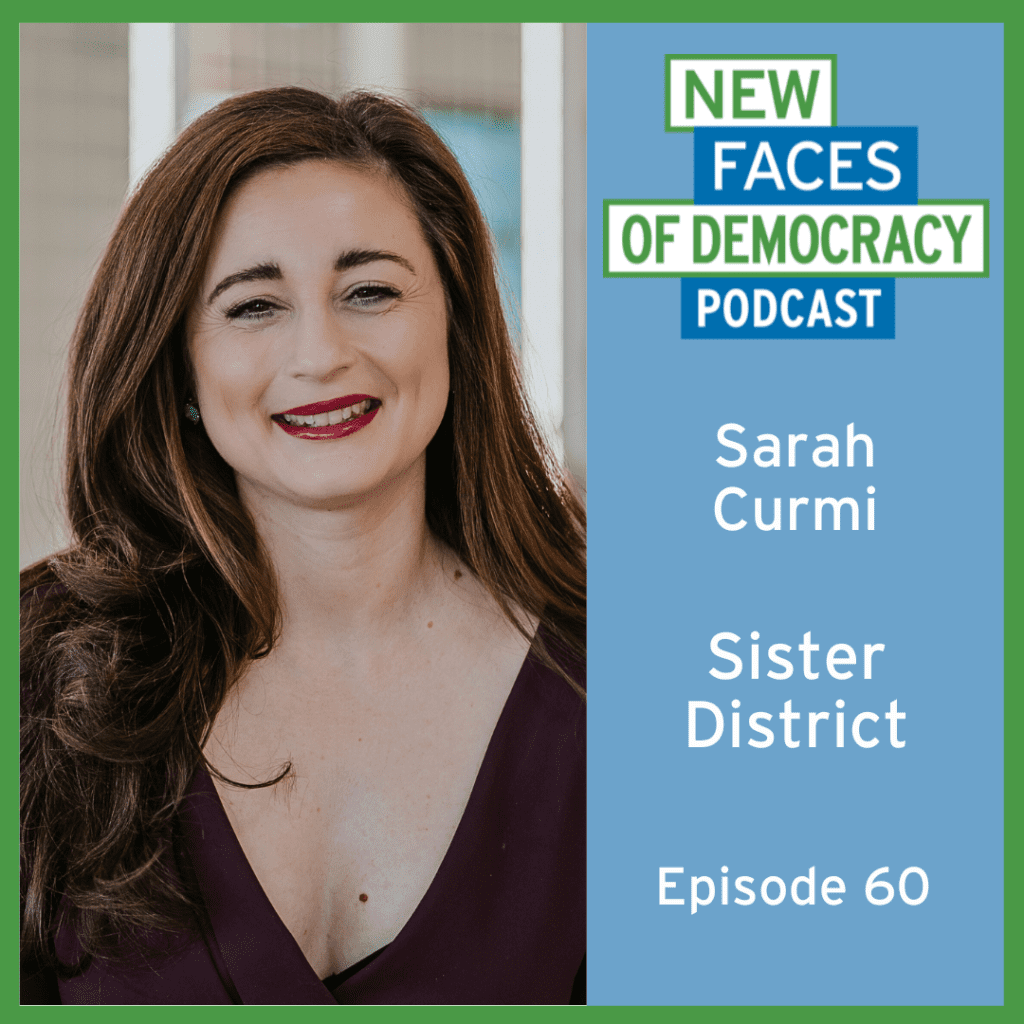July 14th 2020
I’m a firm believer in silver linings, even in these days filled with dark clouds, and one of these is the flourishing of creative activism taking place right now.
If you’ve been following my podcast and the videos on my website, you might have noticed that I’ve got a real soft spot for this kind of thing. I was an art history major who then went on to law school, so this sits squarely at the intersection of my interests in art and policy.
Political art can serve as a mirror that we hold up to society. It can criticize, satirize, galvanize or help us empathize. And political art has a dual purpose – there’s the effect on the viewer when we see it and the therapeutic benefit for the maker.
Here are some different varieties of creative activism that I’ve been seeing at New Faces of Democracy.
Protest Art, Pure and Simple
In 2018, textile artist Diana Weymar had the impulse to embroider “I am a very stable genius” onto a piece of her grandmother’s abandoned needlework, and Tiny Pricks was born.
The Tiny Pricks Project has since evolved into a global textile-based public art protest movement with hundreds of fellow stitchers and 56,000 followers on Instagram. Diana and the Tiny Pricks community embroider Trump’s tweets onto textiles that range from a grandmother’s linens to a treasured baby blanket to a surgical mask and even paper towels.
They pluck these divisive and hateful words out of the cold, hard Twitterverse, transform them into an art form that resonates with nostalgia and the nurturing warmth of home and then give them a new life on Instagram. Diana’s huge following on social media is testimony to the power of these pieces, which are somehow comic and ironic, absurd, and disturbing all at the same time.
As Diana says, there is a catharsis in sitting with these dark words, preserving them as a material record of this time, transforming them with love and hand stitching, and then releasing them into this community where they will be honored. This is protest art for the sake of art and protest, with no commercial element.
Learn more about Diana and Tiny Pricks Project on Episode 7 of the podcast.
Fashionably Political
Resistance by Design
Another variety of creative activism comes in the form of fashion and accessories where some of the proceeds are donated to nonprofit organizations. In Episode 3 of the podcast, I spoke with Alex Posen who took the design skills she honed as the creative director of her brother Zac Posen’s clothing line and co-founded Resistance by Design.
At Resistance by Design, Alex creates fashion and accessories, like her iconic silk scarf depicting all the women who ran for Congress in 2018, that let people express their political opinions. These elegant pieces are meant to be equally at home at the protest march or in the office.
In the face of the Covid-19 crisis, Alex has also designed a collection of “Vote” accessories, including masks and bandannas. Alex puts her money where her mouth is by donating a portion of the proceeds to organizations that support women’s causes.
Prinkshop
Former Kate Spade partner Pamela Bell is doing something similar at Prinkshop.
Pamela turned her talent for bold design and marketing to what she calls “Wear What You Care About” fashion. Prinkshop designs like t-shirts, tote bags and hats are meant to spark conversation and generate awareness of causes like racial equality and women’s rights.
Pamela then donates a portion of the proceeds to related social justice organizations. To learn more about Pamela and Prinkshop, check out the New Faces of Democracy profile of her from 2018.
Creative Activism with Benefits
Say you’re not an artist or fashion designer, how can you channel your cable news-induced rage into positive action and do something creative at the same time?
Try writing some Postcards to Voters. On their own or in groups, Postcards to Voters volunteers write colorful, friendly postcards to help get out the vote for Democrats in races around the country. While the emphasis is on activism, the creative element involving colorful markers serves as a form of art therapy that helps these postcard writers reduce stress and find calm amidst the storm.
You can learn more about Postcards to Voters by reading my interview with founder Tony the Democrat and watching the New Faces of Democracy profile of the Postcards to Voters group, Markers for Democracy.
Here’s why political art today is so important. It’s helping us cope, it’s raising money, it’s inspiring action and it’s chronicling this time in history.
By channeling their emotions into artistic action, these remarkable people are helping others and our society. And there are ways for all of us to get involved in creative activism, as both viewers and creators.
Please feel free to share this with friends who you think would appreciate it, and subscribe to my podcast to keep up a regular diet of hope and inspiration. And to stay up to date on the podcast, follow New Faces of Democracy on Instagram, Twitter, or Facebook.




